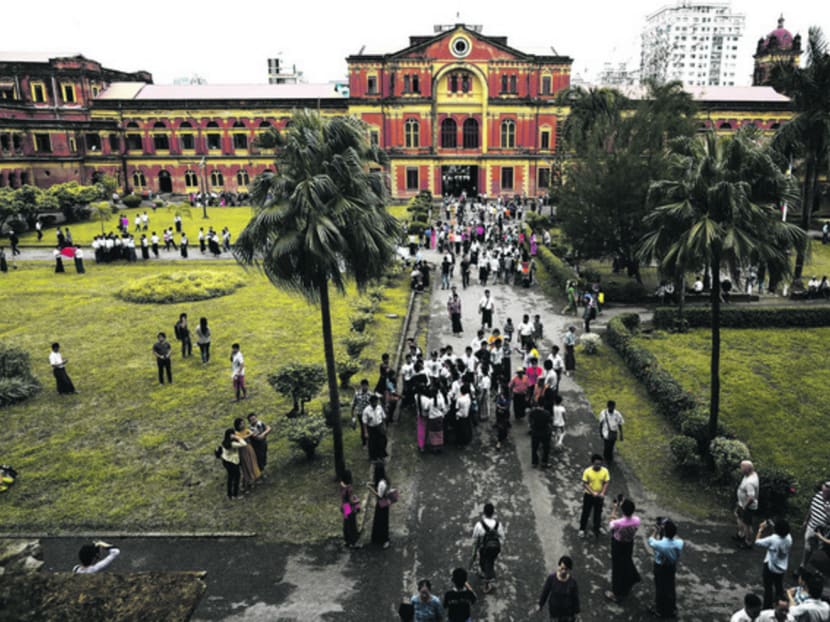Saving Yangon’s heritage buildings
YANGON — “It’s now or never,” said our guide May Lyar Soe, as she led us into a beautiful red-brick building, pointing out where to avoid the vast holes in the marble floor. Like many buildings in downtown Yangon, there are trees growing out of the windows; dogs wandering around the central atrium; and the rusting iron lift is buried under heaps of rubbish.

People visiting the Ministers’ Building, formerly known as the Secretariat Building,
in Yangon.
Photo: Reuters
YANGON — “It’s now or never,” said our guide May Lyar Soe, as she led us into a beautiful red-brick building, pointing out where to avoid the vast holes in the marble floor. Like many buildings in downtown Yangon, there are trees growing out of the windows; dogs wandering around the central atrium; and the rusting iron lift is buried under heaps of rubbish.
But, this building and many others in the same district were once considered among the British Empire’s most important in Asia, as well as the most attractive. Now, as we pick our way up the stairs past an impromptu tea stall and a shrine, one cracked step shifts and groans under our feet.
May grimaced. “Very sad.”
May is one of a handful of guides taking tourists (and locals, for free) on a tour of Yangon’s colonial heritage. Many of the buildings in the centre of the city were once magnificent, befitting what was the world’s busiest port for a short period in the 1930s. The best marble from Italy, iron columns from Manchester and designs appropriated from the most famous architectural styles across the globe. But now, the structures are in ruins after decades of isolation.
May and her colleagues at the Yangon Heritage Trust want to ensure the country’s architectural history is not lost. They want to show how beautiful and historic their former capital city was; and more importantly, they want to save it, before a tide of modernisation sweeps it away.
There are different tours through the day, but each makes the city feel like a living story. As May pointed out the restored building that would soon become Myanmar’s first stock exchange, she recounted its turbulent history as a bank, one that saw millions of pounds worth of rubies thrown into the river and, later, bundles of cash set alight, drifting like charred leaves to the ground, in order to keep the wealth from enemies in two different centuries.
It is a fascinating tour, but the steps it treads are under threat. Land prices in Yangon are higher than in San Francisco, and many of the buildings are in such a state of disrepair that it would be cheaper to start again. It would be an understandable thing to do in such a poor and developing country. But, the loss of Yangon’s heritage in the long term would leave it in a different kind of poverty. THE DAILY TELEGRAPH
Tours can be reserved online (http://yangonheritagetrust.org) or email info [at] yangonheritagetrust.org for more information.





